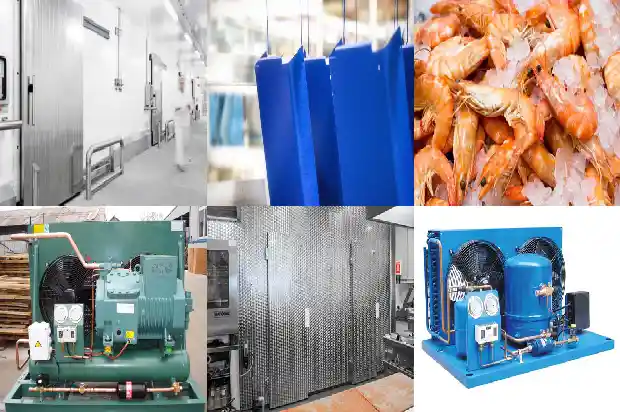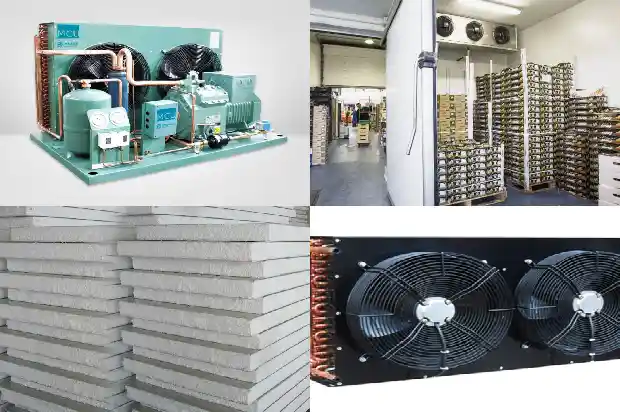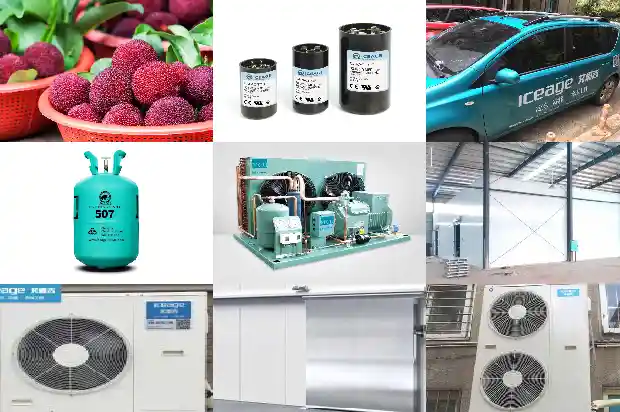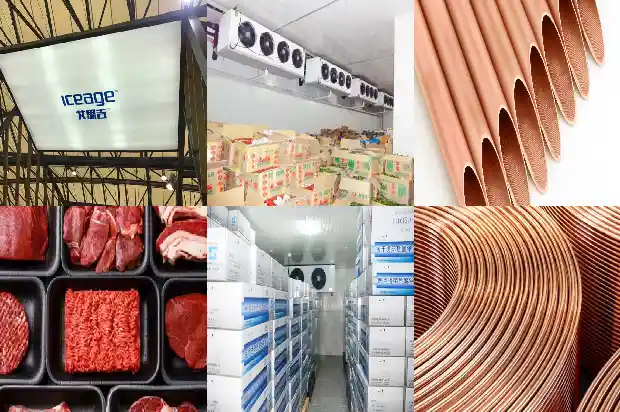Relationship and Adjustment between the Four Main Components of a Refrigeration System and Refrigeration Capacity
2025-03-16
Since the refrigeration capacity of refrigeration equipment in various cold storages can change under different operating conditions, some increase and some decrease. Therefore, a certain margin is reserved in advance during the design to prevent the normal operation of the overall refrigeration capacity of the device from being affected due to excessive reduction in the refrigeration capacity of a certain component under a particular operating condition. Here are the changing trends of the main components when the operating conditions change.
1.

The relationship between the refrigeration capacity of the compressor and the evaporation temperature and condensing temperature is that the refrigeration capacity decreases as the evaporation temperature drops or the condensing temperature rises.
2. Evaporator
The refrigeration capacity of the evaporator depends not only on the difference between the cold storage temperature and the evaporation temperature, that is, its heat transfer temperature difference, but also on the superheat at the refrigerant outlet (for dry - type evaporators) or the liquid level height (for flooded - type evaporators).

3. Condenser
The performance curve of the condenser's refrigeration capacity shows that when the evaporation temperature or the condensing temperature drops, the refrigeration capacity decreases.

4. Expansion Valve
The refrigeration capacity of the expansion valve is related to the pressure difference between the inlet and outlet of the valve and the specific refrigeration capacity of the refrigerant under that operating condition.

Changes and Adjustments of Evaporation Temperature in Cold Storage
The change of the evaporation temperature of cold - storage refrigeration equipment is related to the heat load of the cold storage, the heat - transfer area of the evaporator, and the volume of the compressor. When any one of these three conditions changes, the evaporation temperature and pressure of the refrigeration system will inevitably change.
1. Influence of Changes in Heat - Transfer Area on Evaporation Temperature
The heat - transfer area mainly refers to the evaporation area of the evaporator, and the change of the heat - transfer area mainly refers to the change in the size of the evaporation area. The influence of the increase or decrease of the evaporation area on the evaporation temperature is basically similar to that of the increase or decrease of the heat load on the evaporation temperature. When the evaporation area increases, the evaporation temperature will rise; when the evaporation area decreases, the evaporation temperature will drop.
2. Changes in Heat Load
Changes in heat load occur frequently. When the heat load increases and other conditions remain unchanged, the evaporation temperature will rise, the low - pressure will also rise, and the superheat of the suction gas will increase.
Influence of Changes in Compressor Refrigeration Capacity on Evaporation Temperature
When the energy of the refrigeration compressor is increased, the suction volume of the compressor will increase accordingly. Under the condition that other conditions remain unchanged, the high - pressure will rise, the low - pressure will drop, and the evaporation temperature will also decrease.
As known from thermodynamics knowledge, there is a corresponding relationship between the temperature and pressure when the refrigerant evaporates. Therefore, the adjustment of the evaporation temperature can be achieved by adjusting the evaporation pressure.
The adjustment of the evaporation pressure can be achieved by changing the opening degree of the throttle valve or adjusting the gas - delivery volume of the refrigeration compressor (for compressors with gas - delivery volume adjustment). For example, closing the opening degree of the throttle valve reduces the circulation volume of the refrigerant, the evaporation volume generated in the evaporator decreases accordingly, and the evaporation pressure decreases accordingly. Conversely, if the throttle valve hole is opened wider, the evaporation pressure will increase accordingly. If the gas - delivery volume of the compressor is changed, the evaporation pressure will also change accordingly.
Related Articles
- Introduction to the Relationship between Refrigerants and Cold Storage Temperatures
- Energy - saving Control and Adjustment of Main Operating Parameters of the Refrigeration System
- Do You Know All the 34 Components of the Air-cooled Multi-connected Unit?
- Installation Precautions for the Source Components of Automatic Instruments in Refrigeration Units
- Several Key Components on the Oil Circuit of the Refrigeration System
- HVAC - Common Auxiliary Components of the Refrigeration System
- Analysis of the Main Functions and Components of Refrigeration Air Conditioners
- Analysis of Common Auxiliary Components in the Refrigeration System One by One
- Advantages and Disadvantages of Air-cooled Multi-connected Units and Analysis of Their Components
- Do You Have a Thorough Grasp of All 34 Components and Functions of the Air-Cooled Multi-Split System?
- Analysis of Common Auxiliary Components in the Refrigeration System
- Refrigeration Components of Refrigeration
- Principles, Components and Heat Recovery of Modular Units
- Basic Knowledge of Valve - type Components in Refrigeration Systems (Technical Sharing)
- Analysis of 6 Components in Air - cooled Multi - split Systems
- Analysis of Advantages, Disadvantages and 34 Common Components of Multi - split Air Conditioners
- Are you familiar with the detection and maintenance methods of air conditioner components?
- Top Ten Components of Refrigeration Systems and Five Common Troubleshooting!
